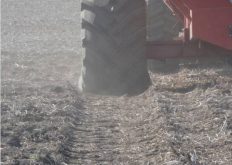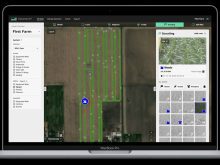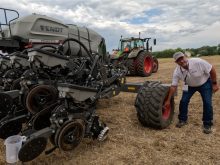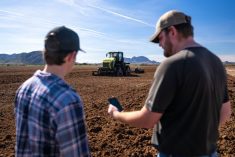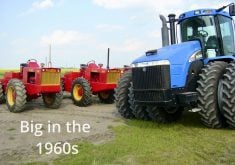A common problem that exists in seeders is the one downforce setting for the whole machine. A system like this can often lead to underapplying downforce pressure in areas of the field where soil is harder or more compacted. This leads to disk openers riding on top of, or partially in, the soil causing undesirable seed placement. The other problem with single point hydraulic systems is having too much downforce applied when there doesn’t need to be. Unnecessary pressure on gauge wheels can cause sidewall compaction in seed furrows and compromise root development.
Read Also
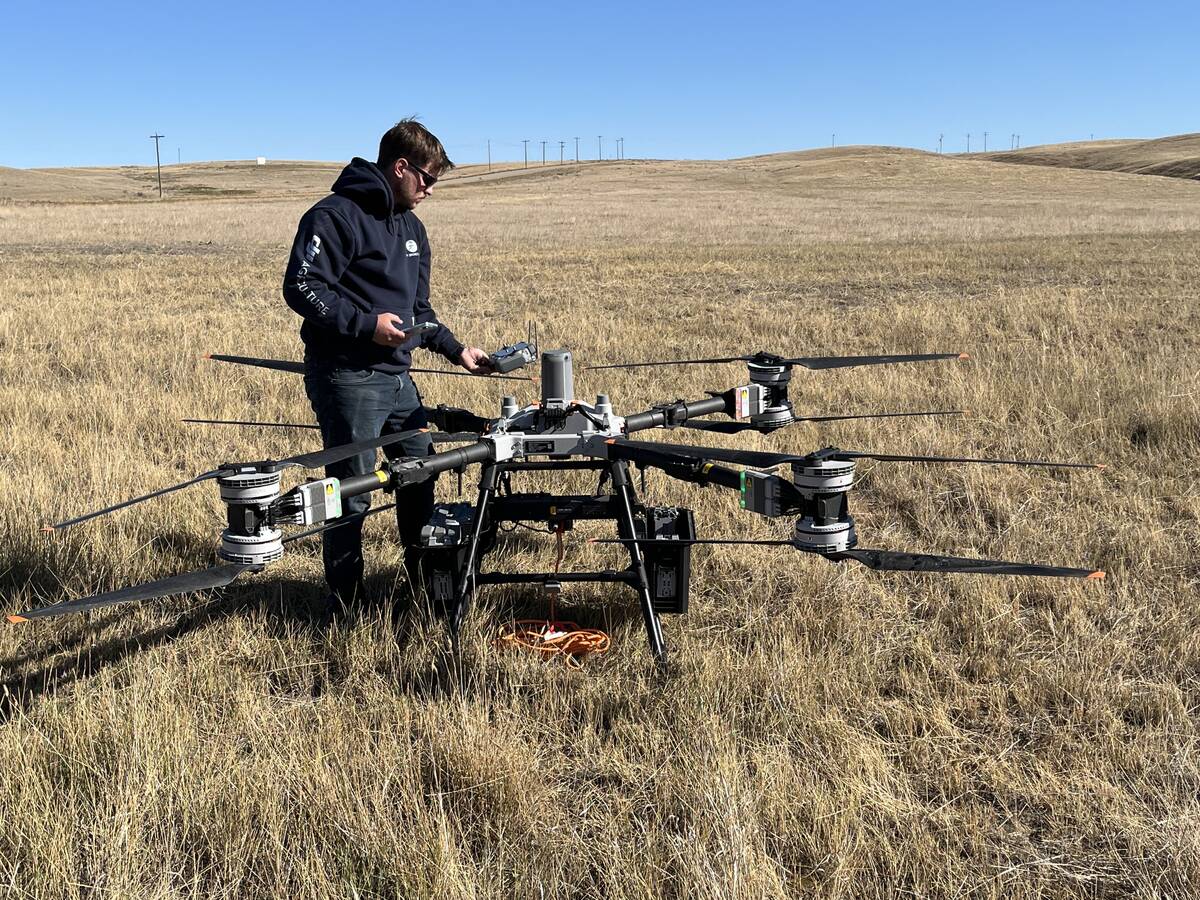
Farm-facing drone does the heavy lifting
Canadian distributor DJI Agriculture unveils its AGRAS T100 drone to western Canada’s producers for greater efficiencies in spraying and granular spreading in fields.
For years, Precision Planting, a U.S.-based company that provides precision ag technologies, has realized the benefits of proper downforce measurement and control on row crop planters. In conjunction with that knowledge and technology, Precision Planting has also realized the benefit of adapting those concepts for air seeders as well.
Seederforce
SeederForce is an automated downforce control system that can be retrofitted to common John Deere disk drills. The system uses load cells on the row units to measure how much weight is on the gauge wheel. If the system detects too little weight, it will automatically increase hydraulic pressure to push harder on the row unit to ensure it properly engages the ground. Likewise, if too much weight is detected on the gauge wheel, the pressure will be decreased until proper weight on the gauge wheel is achieved. This ensures a more consistent seed placement without unnecessary downforce pressure.
The system utilizes most of the seeder’s existing hydraulic system. Load cells in a few of the openers in each gang provide an average downforce measurement for that section. A controller plumbed into the seeder’s hydraulics adjusts the hydraulic pressure as field conditions change. The system allows sections to operate independently from one another across the machine. Disk gangs that are running in tractor track, for instance, will operate with more downforce than a section running in undisturbed soil.
For even more accurate results, SeederForce can be set up where each row operates independently. Here, every row unit has its own load cell and the opener arm compression spring is replaced with a hydraulic cylinder. The row-by-row system has a substantial cost difference with all of the extra components but is by far more precise.
The SeederForce system operates on Precision Planting’s 20/20 Monitor, which shows when openers are not penetrating the ground properly and how soil density and compaction can vary across the field in real time. Additionally, it can be used to track seed distribution across the entire machine.

Although the system is only available for John Deere disk drills, Precision Planting is exploring other brands of seeders to improve as well, which has been a bulk of the company’s work from the beginning. Most of the products the company currently offers are direct upgrades and solutions for row crop planters.
From seeder to planter
According to Troy McKown, a Precision Planting regional manager, in the past, farmers would purchase a used planter from the United States to use with the seeder upgrade kit, which was a good way to dip a toe in the water, so to speak. However, that trend seems to be falling off because those machines don’t have what is required to make a planter useful on the Prairies, as they often don’t match the capacity and broadacre capability like an air seeder.
In response, farmers have started building their own planters. This trend, says McKown, has moved from the U.S. Northern Plains into Canada. The build-it-yourself approach allows growers to customize a machine to their needs, often at 20 per cent less than the cost of a new planter.

Growers can choose toolbar style and add to it the row units at the spacing that suits the crops they grow. Residue management systems that suit specific soil conditions and tillage practices can be added along with any onboard tanks for seed and fertilizer. Adding the capability to tow an extra implement like a tank for seed and fertilizer allows for almost limitless capacity. The addition of in-furrow and between-row fertilizer options really make for a complete package.
From an agronomic standpoint, a planter is superior to an air seeder because it more accurately places seed into the ground. It does not throw lumps and piles of seed down the way an air seeder will. Metering disks are available for almost every crop and even a blank disk is offered, which you can drill out yourself.
With the planter, you are better equipped to manage seed mortality by precisely managing depth, placement and spacing, while residue management systems like row cleaners provide a better environment for the furrow to be cut into.
Focus on soil
Also, the technology available on the planter provides a clearer picture of what is going on in the soil. Not only are downforce measurements mapped for a better understanding of soil density but a sophisticated seed firmer sensor provides details about furrow conditions. The SmartFirmer relays intelligence about the soil to the cab at the moment of planting.
The seed firmer performs its normal duty of gently pushing seed into the trench for better seed-to-soil contact while also providing five key soil measurements — soil temperature, moisture, furrow uniformity, and residue and organic matter sensing — using infrared and non-infrared light.
The SmartFirmer sensor measures the variability in temperature changes throughout the day and soil type. A furrow measurement provides information on the amount of foreign material in the seed furrow. This measurement alerts the operator to hair-pinning and that adjustments to the row cleaners are required.

Cation exchange capacity in the soil is another measurement the SmartFirmer makes. Information about the soil’s organic matter and ability to hold on to valuable nutrients is available for growers.
The seed firmer also relays important moisture data. The tool indicates whether or not moisture is present in the soil at planting depth based on a 1–100 point scale. Another key measurement is moisture availability for seed germination. For example, if the monitor displays a reading above 25, the seed can take up to 25 per cent of its weight in water over the following three days.
Having this data will make decisions at planting time easier and on-the-fly prescription adjustments to population and fertility possible. Harvest data can also be used in conjunction with planting data providing growers with the ability to make more informed decisions on long-term soil and fertility management.




